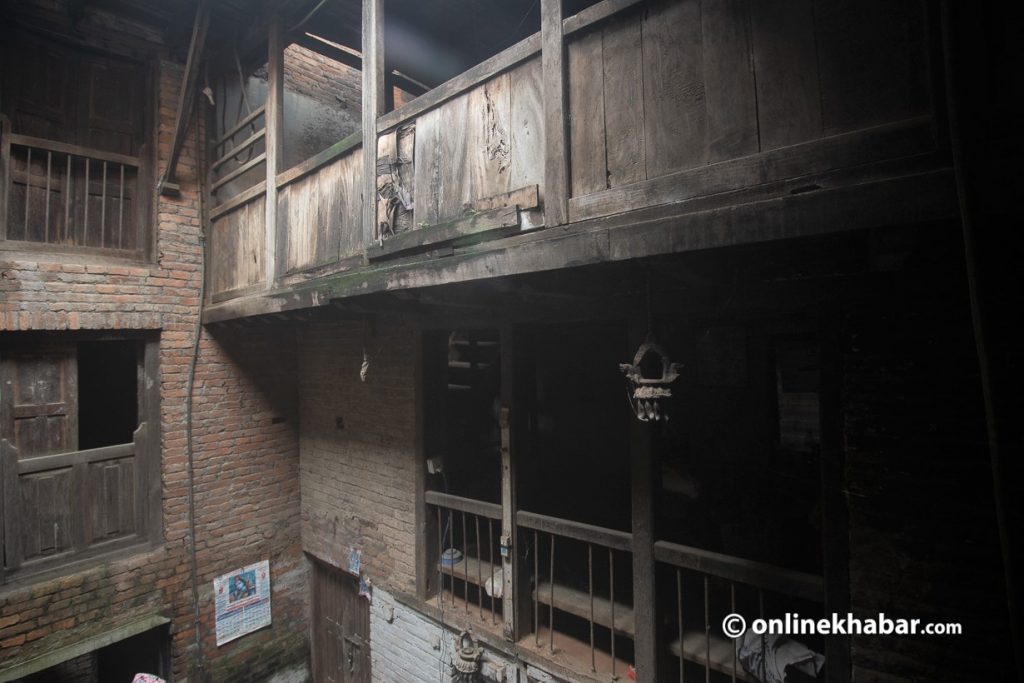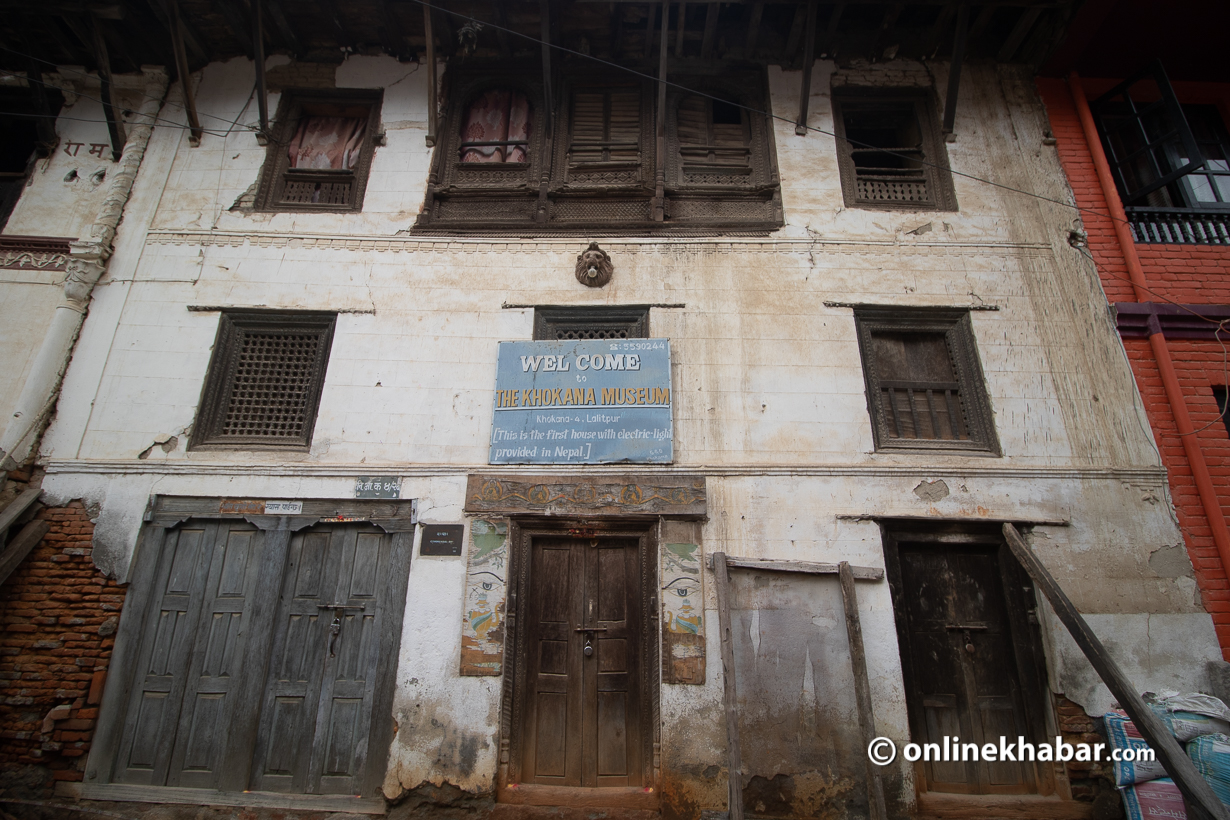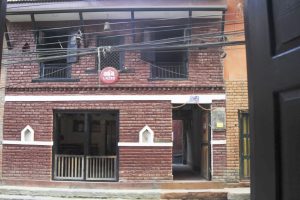The story starts from a very dilapidated house, situated about 50 metres north of the Indrayani temple in Khokana, a small town on the southern side of Kathmandu valley.
This house, 118 years ago, witnessed a miracle. People from all over the village had gathered. The villagers who spent their nights in the dim light of lanterns were amazed to see the new, gleaming light powered by electricity.
For the present generation, electricity is not a wonder. But, 118 years ago, it was a very big thing. This was the first house in Nepal to get electricity. The house was powered even before the inauguration of the first hydropower plant on May 22, 1911.
This house did not belong to any king nor an aristocrat. It was the house of a commoner, Siddhi Lal Maharjan. Some half a dozen light bulbs were hung and burning brightly in the house. People were mesmerised to see that.
The current house owner Madan Krishna Maharjan remembers how his grandfather Siddhi Lal told this story to him like a fairy tale.
Significances of Bijuli Ghar
This house has two historical significance; one as the first house with electricity and the other as the Newa Art Museum. If it had not been destroyed by the 2015 earthquake, the museum would have stood still as the living heritage of the entire Newa community.
The house had electricity, but it neither had electrical appliances nor a metre. No matter how much it was consumed, they would pay only 5 paisa per month.
It was with this house that Nepal entered the electric age. Shortly after that, the first hydropower plant was inaugurated and then Prime Minister Chandra Shamsher Rana even spoke at Tundikhel and claimed it was the ‘beginning of a new era’. “By the grace of the god, our country’s power plant will now light us up. This is the first factory of its kind for Nepal.”
Upon Chandra Shamsher’s return from the UK
In 1907, Chandra Shamsher Rana left for the United Kingdom. During his stay in the UK for about 10 weeks, he had had an opportunity to learn about the production of electricity and its benefits. It had only been 30 years that the world started producing electricity. In the UK, the hydropower project started in 1881.
Upon his return to Nepal, he chose the Pharping area, some 12 km south of Kathmandu, for Nepal’s first hydropower project. And finally, in 1911, Nepal also got its first hydropower project, under the direction of electrical engineers Barnau Puwante and Padma Shamsher JBR.
But, why did only one house had electricity during the Rana period? The answer is still enigmatic and based on speculations alone.
Some historians have speculated that because there was a risk of damage or fire due to a short circuit, the tests were first done in a commoner’s home. But the house owner, Maharjan, has a different opinion.

The Khokana locals donated their labour during the construction of the Pharping Hydropower Project. And, Madan Krishna adds it was because Chandra Shamsher was impressed by the labour contribution that the government allowed the testing at his grandfather, Siddhi Lal, also the local chief, along with a few others.
In 1911, the national newspaper, Gorkhapatra, used to be published every Monday. Although Gorkhapatra was published on May 22 (Monday) of the same year, there was no mention of the inauguration of Chandra Jyoti Hydropower.
It was only on May 29 that the newspaper mentioned Chandra Jyoti Hydropower. The story was carried on its June 5 issue also. Both issues covered electrical engineer Puwante and his contributions. Yet, the issues still did not have mentions of the house in Khokana.
Witnessing the ruins of Bijuli Ghar

Today, this house is awaiting reconstruction. This three-storey house is built in a traditional Newa architectural style and one can see a bricklayer as the face of the house, and on the second and third floors, there are aankhijhyals (latticed windows) or air vents.
On the ground floor of the house is a museum of utensils and art objects used by the Newa community for daily feasts and household items, a popular attraction for foreign tourists to visit. When you enter the chok (square), there are a few dalucha (earthen oil lamps that are hung along the corridor or square) still hanging like in traditional Newa houses before there was electricity.

To climb to the first floor, one has to climb an old wooden staircase. The first floor is used as storage while the kitchen is on the second floor. There, one can also see a statue of a lion, with a light bulb protruding from its mouth.
But, the old bricks are crumbling while the timber used in the eaves and the structure has been damaged. The house is not in a suitable condition for people to stay, even for a while. No one has lived in this house for the past six years, after the 2015 earthquake. But, the house that witnessed the history is still awaiting a hint of reconstruction.
Madan Krishna Maharjan estimates it will cost between Rs 40 to 50 million to rebuild the house. But, he says because there is a lack of investment, the house continues to face the same predicament. The local ward office has promised its help for reconstruction, but he says the small amount of assistance provided would not be enough.
Meanwhile, he says, “I do not have the money to rebuild the house as it was. Neither do I want to rebuild this house, with so much history, in a new style either.”






















